In modern football, the attacking midfielder has evolved beyond the traditional “number ten” stereotype of the free-spirited playmaker. Today, this role demands tactical discipline, physical intensity, and versatility within a collective structure. Whether deployed as a single central attacking midfielder in a 4-2-3-1, or as part of a dual advanced midfield line in systems like 4-2-2-2 or 3-2-2-3, the attacking midfielder now operates at the crossroads of creativity, pressing, and positional intelligence.
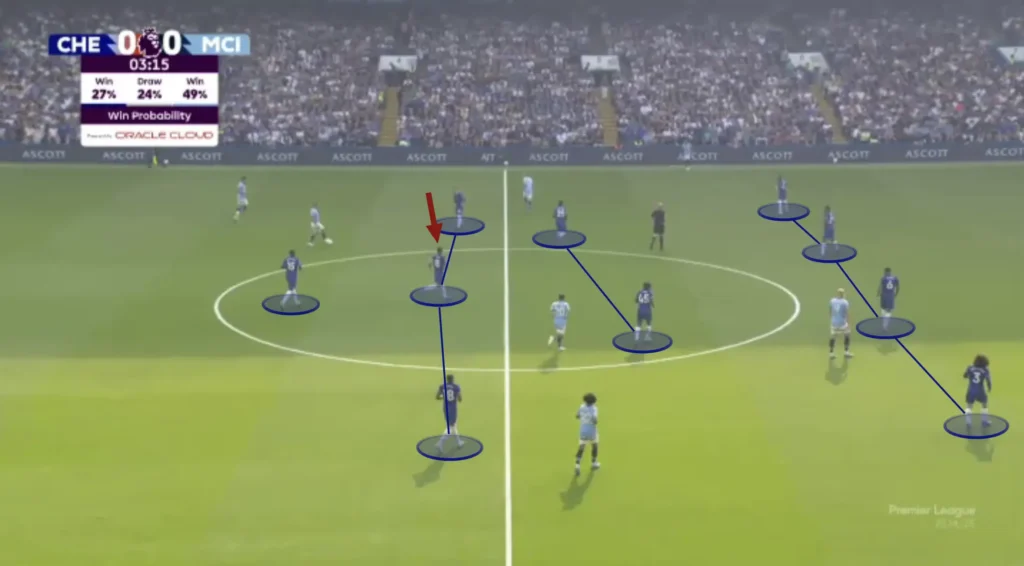
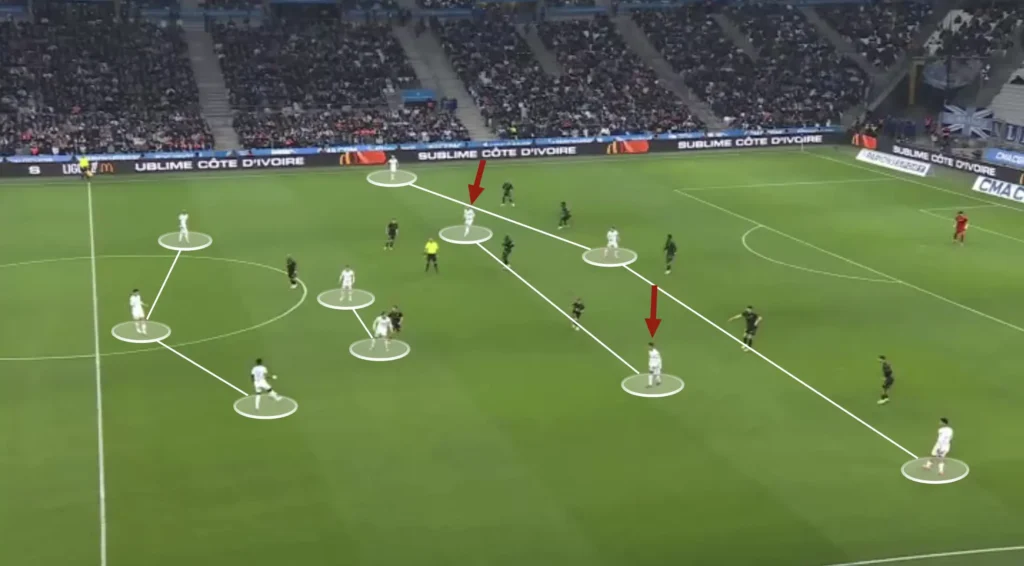
For scouts and coaches, evaluating this profile goes far beyond counting assists or dribbles. The real challenge lies in identifying players who can combine playmaking ability with defensive contribution and tactical adaptability — those capable of being both a creator and a connector within the team’s structure.
This analysis breaks the position down into three key competencies for modern scouting:
- Pressing ability – their defensive impact and intensity.
- Contribution to build-up – their role in linking midfield and attack through positional play.
- Contribution to chance creation – their final-third efficiency and creative output.
1. Pressing Ability: The Modern Attacking Midfielder’s First Responsibility
In contemporary football, attacking midfielders no longer rest between attacking phases. Their defensive involvement has become an integral part of team structure, particularly in systems that rely on high pressing and compact mid-blocks.
The best attacking midfielders use pressing not just as a defensive tool but as a means of regaining possession in advanced areas and immediately creating transition opportunities. Scouts must therefore assess both the player’s pressing intensity and their tactical understanding of pressing triggers.
Reading Pressing Cues
Effective pressers recognize when to step out. They understand the importance of body orientation, shadow cover, and pressing angles — forcing play toward a pressing trap rather than chasing aimlessly.
For example, Florian Wirtz at Bayer Leverkusen under Xabi Alonso combined energy with intelligence: he closed passing lanes while curving his run, forcing the opposition to play wide or long.
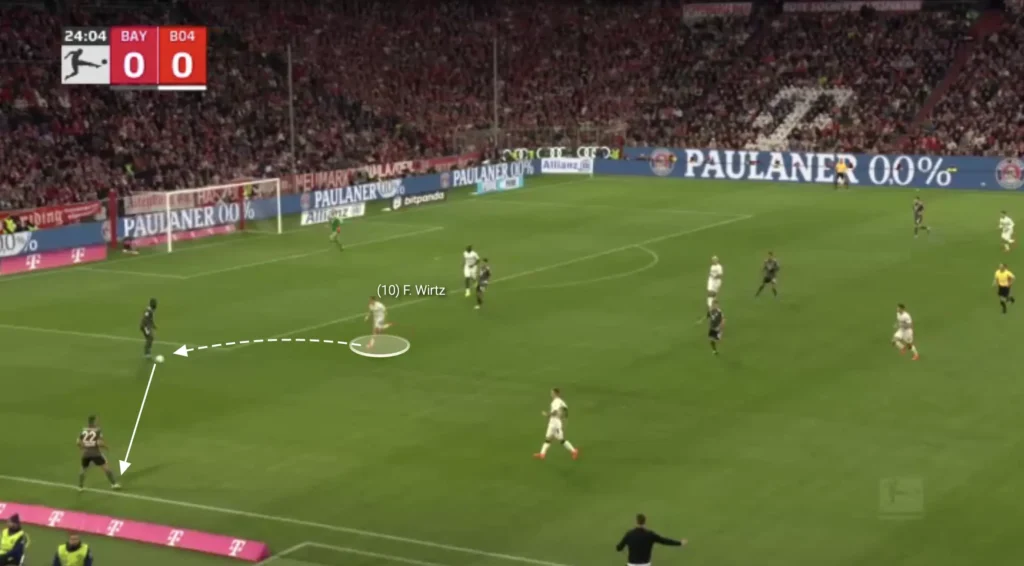
Compactness and Defensive Shape
In formations like 4-2-3-1, the attacking midfielder often leads the second pressing line, staying connected to the striker and preventing central progression. Their main defensive task is to block vertical passes through the center — disrupting the opponent’s build-up and forcing play toward the flanks, where pressing traps can be triggered.
A good example is Jude Bellingham at Real Madrid, who positions himself intelligently between defenders and midfielders to block forward passing lanes, using subtle adjustments in body shape to cut access up the pitch while remaining ready to press the next receiver.
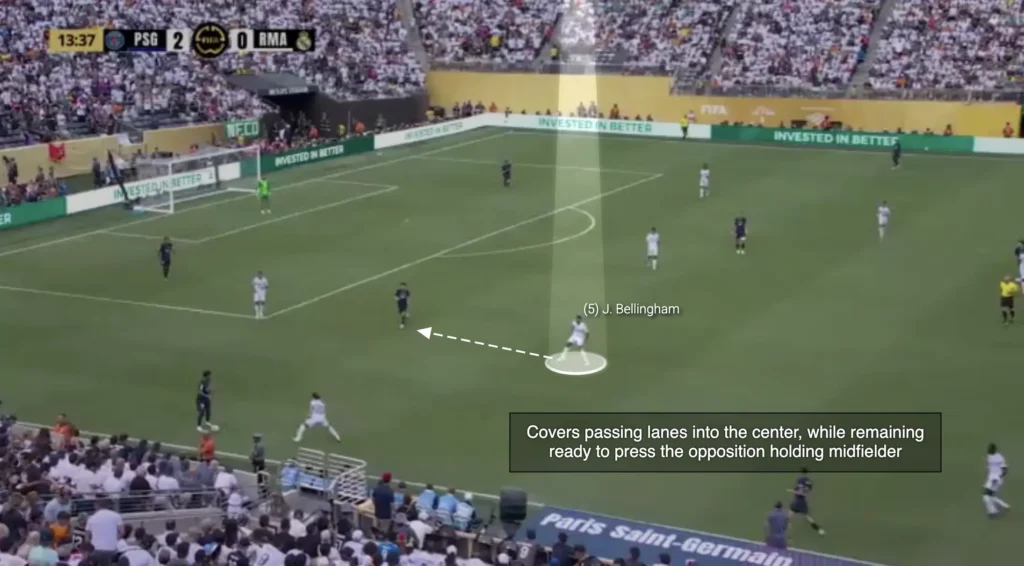
What Scouts Should Look For
- Frequency and success rate of pressing actions in the attacking third.
- Timing and body orientation during pressing.
- Ability to maintain compactness between midfield and forward lines.
- Work rate and consistency off the ball.
A pressing-oriented attacking midfielder not only contributes defensively but also creates offensive moments by winning possession high — a crucial indicator of tactical maturity.
2. Contribution to the Build-Up: The Connecting Link
Beyond creativity, elite attacking midfielders serve as the connective tissue between midfield structure and attacking fluidity. Their positioning and decision-making in deeper zones often determine how efficiently a team progresses the ball.
Dropping Deep to Dictate Play
In a 4-2-3-1, the attacking midfielder may drop between the lines of the opponent’s midfield to create a numerical advantage in the second phase. This dropping movement helps circulate possession and progress through compact blocks.
For example, Jamal Musiala frequently drops deep into the left half-space during Bayern’s build-up, linking play with the full-back and interior midfielder before accelerating into advanced positions.
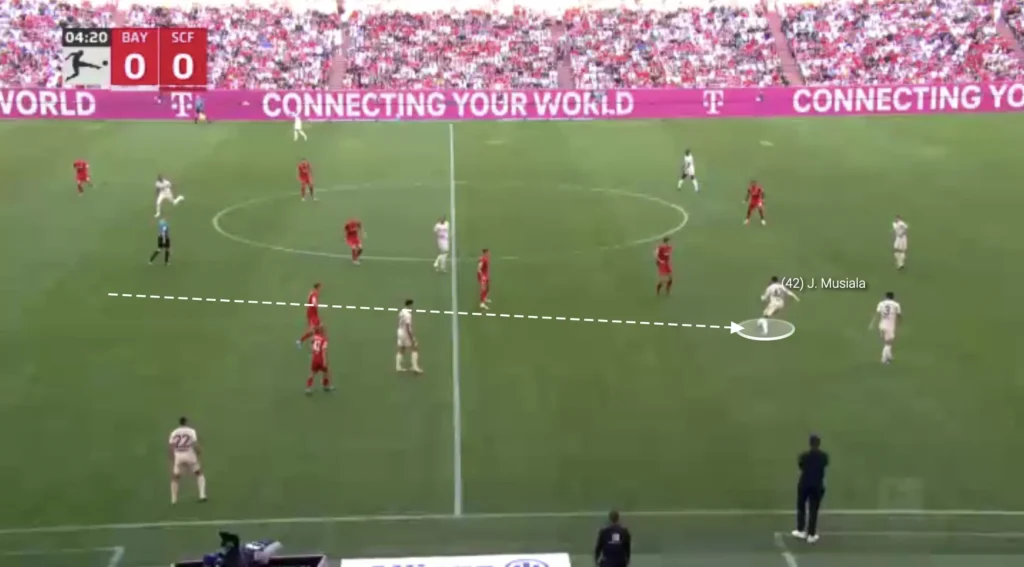
Positional Play and Spatial Awareness
The ability to recognize when to offer support versus when to stretch the opposition defines the most intelligent attacking midfielders. In build-up, the priority is not always to receive but to position oneself in a way that destabilizes the opponent’s structure.
Bernardo Silva’s adaptability for Manchester City illustrates this. At times, he forms part of the midfield pivot to help circulate possession; at others, he positions himself higher to draw out defenders and create space behind.
Scouting Focus Points
- Awareness of spacing and positioning between the lines.
- Ability to play under pressure and retain possession.
- Movement to create progressive passing options.
- Use of first touch to break lines or manipulate defenders.
Scouts should look for attacking midfielders who understand the tempo of build-up — those who can switch between patient recycling and incisive progression based on game state.
3. Contribution to Chance Creation: The Decisive Quality
Ultimately, the attacking midfielder’s defining quality remains their capacity to create and influence goal-scoring opportunities. But modern chance creation is not limited to final passes — it also includes movement coordination, third-man runs, and manipulation of defensive structures.
Creating from Between the Lines
Operating between the opposition’s midfield and defensive lines, the attacking midfielder must recognize pockets of space and exploit them with minimal touches.
The best examples, like Phil Foden, consistently find these pockets, turning quickly to play progressive or penetrative passes before the block can recover.
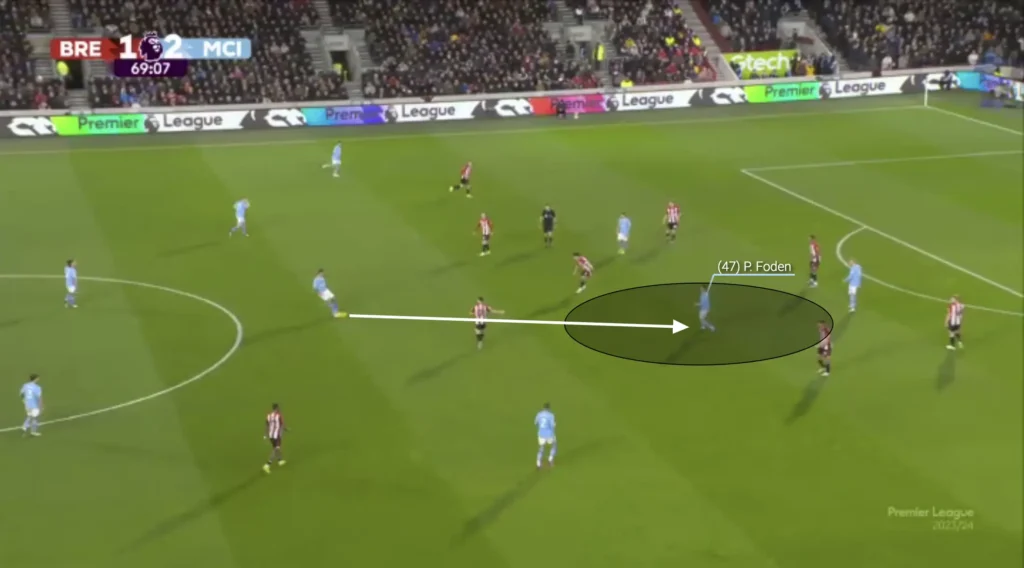
Tempo and Decision-Making in the Final Third
At elite level, chance creation depends as much on timing and tempo as on vision. Scouts should analyze how quickly a player recognizes passing opportunities and whether they adapt their tempo to the movement of teammates.
For instance, Phil Foden also demonstrates excellent timing in the final — he releases the ball early to exploit dynamic runs, rather than over-dribbling or delaying.
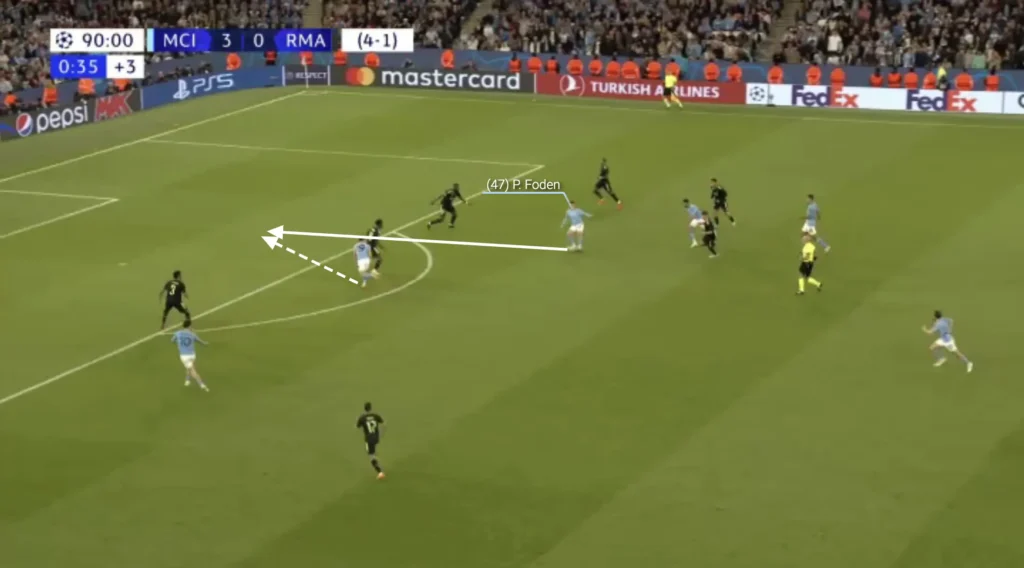
Versatility in Chance Creation
Chance creation also varies by structure. In a 4-2-3-1, the attacking midfielder often plays as the central creator behind the striker; in a 4-2-2-2 or 3-2-2-3, they may combine in narrower channels, coordinating quick interchanges and third-man movements.
Scouts must evaluate:
- Volume and quality of key passes and expected assists (xA).
- Participation in pre-assist and secondary build-up actions.
- Ability to create separation from defenders through body feints or first-touch control.
- Tactical variety: can they create through dribbling, combination play, or set-play execution?
An attacking midfielder’s value lies in consistency — the ability to repeatedly produce high-quality opportunities under different types of pressure.
Conclusion: Profiling the Modern Attacking Midfielder
Scouting attacking midfielders in modern football requires moving beyond traditional metrics like goals and assists. The role has become multifaceted — a blend of pressing intelligence, positional discipline, and creative efficiency.
- Pressing ability reveals a player’s tactical commitment and defensive awareness.
- Contribution to build-up showcases their adaptability, composure, and spatial understanding.
- Contribution to chance creation demonstrates their creative ceiling and decision-making under pressure.
For scouts, the key lies in contextual evaluation — analyzing not only what the player does, but how and why they do it within a tactical framework. The most successful attacking midfielders today are those who can press, build, and create with equal fluency.
In an era where tactical fluidity defines success, identifying an attacking midfielder who masters all three dimensions is not just valuable — it’s essential.
